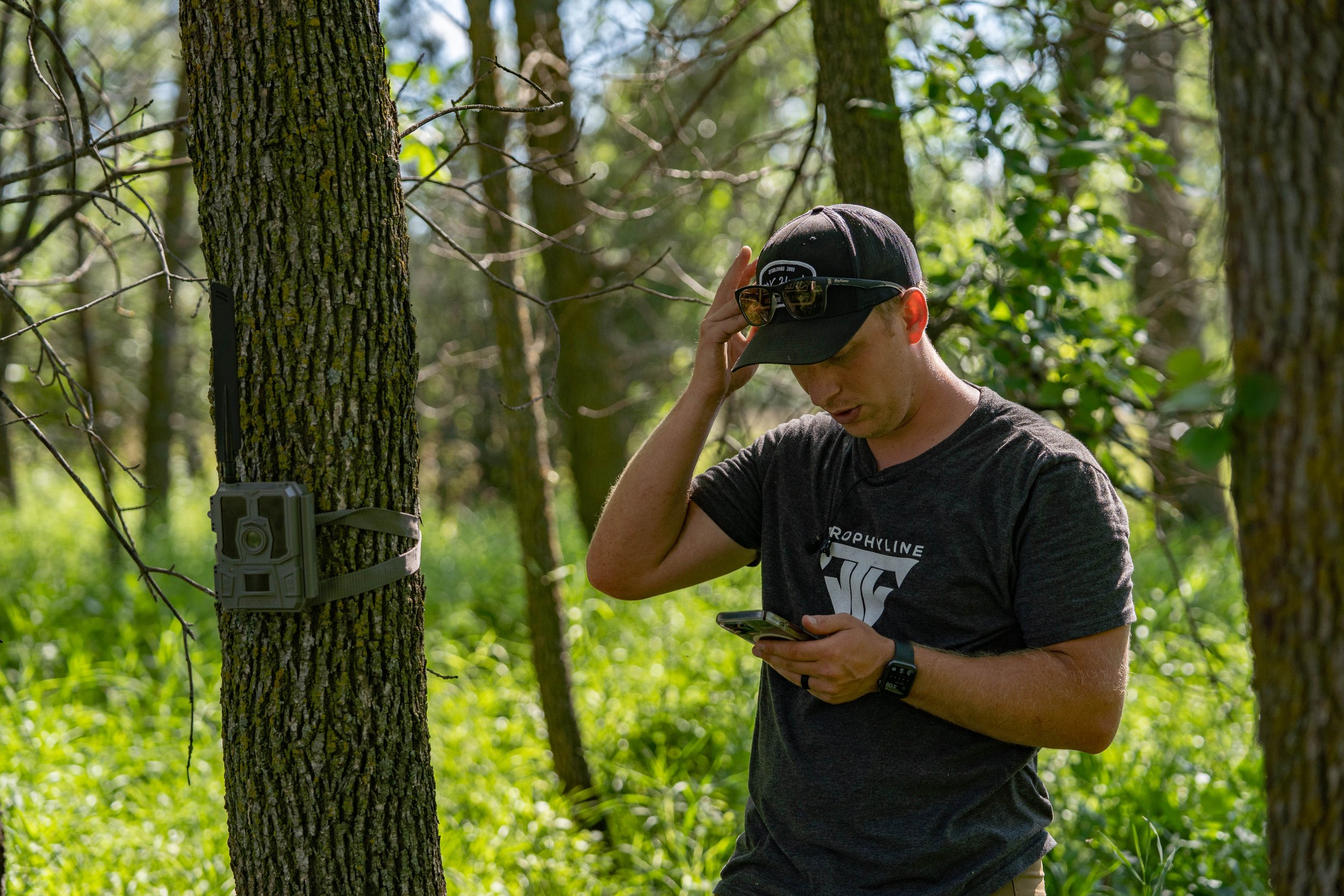By Alex Comstock
If there's one thing that can get a deer hunter's blood pumping in the summer, it's velvet bucks. Seeing bucks in the summer, watching them, and observing them from a distance, whether it be from your vehicle or sitting on the edge of a secluded bean field can be addicting. But what can be learned through doing this? Are there more effective ways to do it than you might think? Is there a true point to it besides just getting excited? Over the past few years, I've spent a lot of time behind glass searching for velvet bucks, and there are some important factors I've taken away from doing it.
Don't Take a Sighting for Face Value
One of the first mistakes I made when I started to glass velvet bucks was I'd watch one feed out into a field one night, and then not go back there until season started (North Dakota starts Sep. 1). I'd then set up near where I saw the buck, and would be surprised when he showed up - 500 yards away. A buck is patternable during the summer and into September, but he will still move differently based on the conditions.
If you observe a mature buck during the summer, go back home and try and figure out why he was where he was. I'd be willing to bet it wasn't random. What was the wind direction and speed? How do you think he might enter the field on a different wind direction? By dissecting the observation, you can begin to hypothesize what the buck was really doing. And then go back to that spot a few more times if you can to put those guesses to the test. Patterning a buck might not be as easy as you think. I learned that the hard way.
Mature Bucks Like Secluded Areas
If I'm heading out to look for mature bucks, I'm doing it one of two ways. Either I will be going to a pre-determined location, and will be sitting on the edge of a field somewhere or will be driving around on the back roads to see what I can learn. If option two is the route I'm taking, I seek out secluded areas. Minimum maintenance roads are my favorite, especially if it looks like there's hardly any traffic that uses it. Could you see a buck in a busy area? Yes, but if you are looking for one to hunt in the early season when he's still patternable, odds will be higher in a secluded area that doesn't see much human interaction.
Don't Ruin Anything Right Now
For as much as I love to observe velvet bucks this time of the year, it's not worth educating them. It can be tempting to get in as close as you can to get a better look at a certain buck, but if you spook them, it can have a severe negative impact on you chances of harvesting him come early season. One thing I've learned is to stay on the fringes, and avoid pushing too deep to get a better look at a certain buck. It may make a difference in your ability to harvest him.
If You Have an Early Opener, You Can Capitalize
One thing that I love about living in North Dakota is the early opener. This year deer season will be opening September 1st, and at that time of the year, you can still catch a buck on his summer pattern before he breaks apart from his bachelor group and changes his daily movements. Through observing a buck over the course of a summer, if you can learn where he enters a field, or how he likes to move through a certain area, you can utilize that information to set up on him early in the season. A mature buck is going to stay consistent with his pattern, because at that time of the year, he's primarily on a bed to food pattern. If you can figure out how he is getting from point A to point B, you have a chance at having an encounter with him.
Patterns Will Eventually Change
If you've got a later opener such as October 1st, or aren't able to get it done early in September, don't put as much stock into those summer patterns you observed. I usually tend to notice that about the third week of September, things really start to change. Bucks are loosing their velvet, starting to build up that testosterone, and most are changing their core home ranges, even if just slightly. This is where I like to "re-find" bucks by hunting observation sets, and through the use of trail cameras. If you can find a buck back that you scouted in the summer, I try to combine as much current information as possible with what I learned about him during the summer to help me get into a position to harvest him.
Conclusion
There's a lot that can be learned through figuring out how a mature buck lives his life during the summer months. I know I've been able to take steps forward as I pursue mature bucks in the early months of the season ever since being able to get out and watch them from a distance this time of the year. The more information you can get from a mature buck, the better chance you have to kill him come fall.































